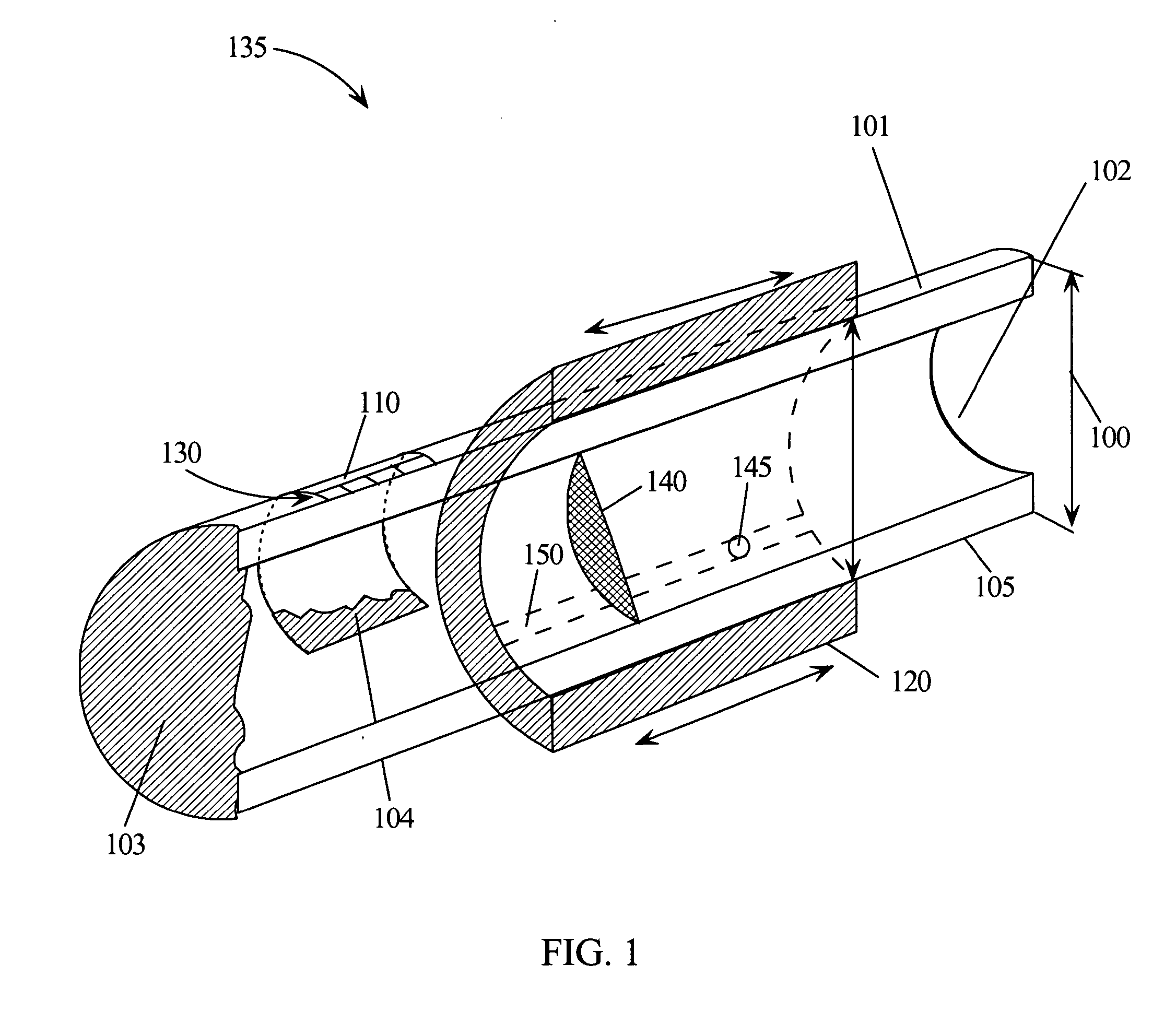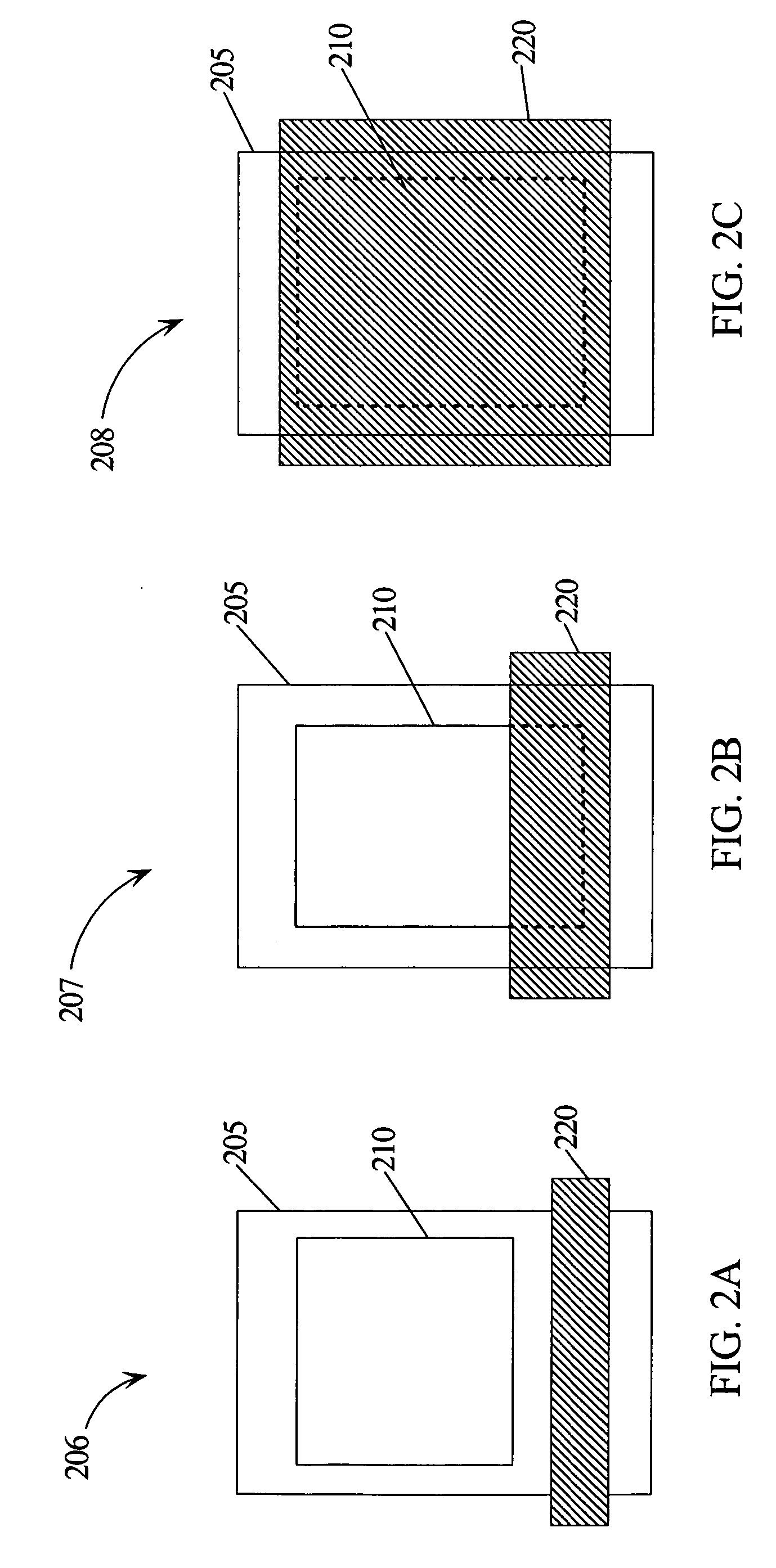Mouthpiece for use in a spirometer
a spirometer and mouthpiece technology, applied in the field of measuring air pressure, can solve the problems of only limited degree of air flow obstruction, variable resistive elements, and difficulty in comparing breath tests performed on the two different mouthpieces, and achieve the effects of small resistance, large resistance to his breathing, and convenient us
- Summary
- Abstract
- Description
- Claims
- Application Information
AI Technical Summary
Benefits of technology
Problems solved by technology
Method used
Image
Examples
Embodiment Construction
Slidable Outer Sleeve
[0029] As illustrated in FIG. 1, one example embodiment of the invention generally entails a spirometric mouthpiece or breathing tube 135 comprising a first tube 101 with an upstream or distal end 102 that a patient may blow into. The tube 101 also has a downstream or proximal end 103. The tube 101 may have one or more openings 110 formed within or through the tube wall 105. The opening 110 may be located near the upstream end 102 or downstream end 103 or anywhere in-between. In addition, the downstream end 103 may be open or closed.
[0030] The one or more openings may be covered with porous fabric 104 to provide resistance to air flow thereby constituting a resistive element. When the patient blows into the mouthpiece, the porous fabric 104 resistive element cooperates with the tube 101 to provide a conduit for the patients' air while providing resistance to the air flow so that the air pressure can be generated and recorded.
[0031] The mouthpiece may also in...
PUM
 Login to View More
Login to View More Abstract
Description
Claims
Application Information
 Login to View More
Login to View More - R&D
- Intellectual Property
- Life Sciences
- Materials
- Tech Scout
- Unparalleled Data Quality
- Higher Quality Content
- 60% Fewer Hallucinations
Browse by: Latest US Patents, China's latest patents, Technical Efficacy Thesaurus, Application Domain, Technology Topic, Popular Technical Reports.
© 2025 PatSnap. All rights reserved.Legal|Privacy policy|Modern Slavery Act Transparency Statement|Sitemap|About US| Contact US: help@patsnap.com



